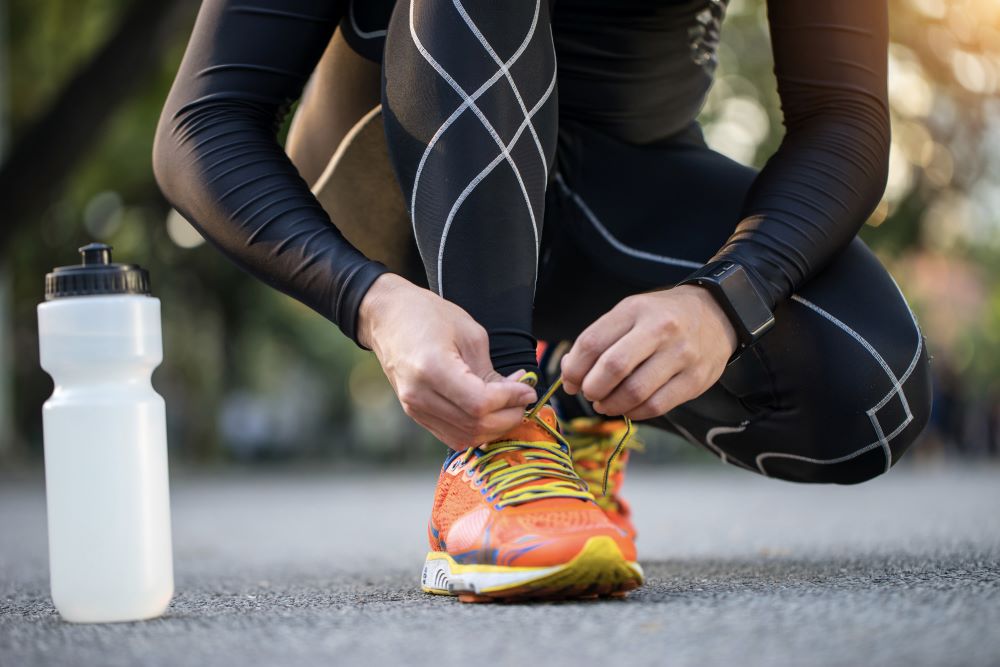Running is a fantastic way to improve cardiovascular health, boost mental well-being, and sculpt a strong physique. However, it can also place significant stress on your knees, which are pivotal in absorbing the impact with every step. **Running knee exercises** are essential for anyone looking to enhance their performance while minimizing the risk of injuries. These exercises not only strengthen the muscles around the knee but also improve flexibility and stability, leading to a more efficient and enjoyable running experience.
Incorporating knee exercises into your routine can be a game changer. By focusing on the key muscle groups, such as the quadriceps, hamstrings, and calf muscles, you create a robust support system for your knees. This is crucial, especially when tackling varied terrains or increasing running distances. Whether you are a seasoned marathoner or a casual jogger, engaging in targeted knee exercises can result in a significant leap towards fitness freedom and performance enhancement.
At “Run Just For Fun,” we believe that every step you take should be a leap towards better health and joy. Our community is dedicated to helping runners like you embrace the joy of running through tailored workouts and trailblazing adventures. If you’re eager to dive deeper into exercises that can transform your running journey, visit our website to learn more and get started today!
Importance of Strengthening Knee Muscles

The knees are arguably one of the most critical joints for runners, acting as a vital link between the upper and lower body. Strengthening the muscles surrounding the knee is crucial for several reasons, primarily because it enhances running efficiency and reduces the likelihood of injuries. The knee joint relies heavily on the support of the muscles, tendons, and ligaments around it. By focusing on **strengthening these muscles**, runners can ensure that their knees are better equipped to handle the repetitive stress of running.
Strong knee muscles, particularly the quadriceps and hamstrings, help in absorbing shock and stabilizing the knee joint during movement. This stability is essential for maintaining proper alignment and form while running, which directly translates to improved performance. Additionally, strong knee muscles can help prevent common injuries like runner’s knee, IT band syndrome, and patellar tendinitis, which can sideline runners for weeks or even months.
Furthermore, strengthening these muscles can also aid in correcting muscle imbalances and improving overall leg strength, which not only benefits your running but your daily activities as well. Strong knees contribute to greater endurance and speed, making those long runs and quick sprints more attainable and enjoyable. In essence, dedicating time to strengthening your knee muscles is a proactive approach to safeguarding your running journey and ensuring that every run is a step towards a healthier, more resilient you.
Effective Warm-Up Techniques for Runners

Before hitting the trail or pavement, it’s pivotal for runners to engage in an effective warm-up routine. Proper warm-up techniques not only prepare the body for the physical demands of running but also enhance performance and reduce the risk of injuries. A well-rounded warm-up should increase your heart rate, improve blood flow to the muscles, and enhance joint mobility.
Dynamic stretches are a fantastic way to kick off your warm-up. These involve moving parts of your body while gradually increasing your reach, speed of movement, or both. Some effective dynamic stretches for runners include **leg swings**, **walking lunges**, and **high knees**. These exercises target the muscles you’ll be engaging during your run, ensuring they are ready to function at their best.
Additionally, incorporating a brief session of light jogging or brisk walking can be beneficial. This not only raises your heart rate but also mentally prepares you for the run ahead. Aim for about 5 to 10 minutes of this activity to get the blood circulating and elevate your energy levels.
Another valuable component of a warm-up is activation exercises. These are targeted movements that help “wake up” the muscles, ensuring they are ready to support your run. Exercises like **glute bridges** and **ankle bounces** can engage key muscle groups, enhancing your running form and efficiency.
Ultimately, investing time in a comprehensive warm-up routine is crucial for any runner looking to improve their performance and run injury-free. By emphasizing dynamic stretches, light aerobic activity, and muscle activation, you’ll be set to conquer your running goals with confidence and vitality.
Key Knee Exercises to Improve Performance

For runners, maintaining healthy knees is crucial to sustaining performance and avoiding injuries. Incorporating key knee exercises into your routine can significantly enhance your running efficiency and longevity. These exercises focus on strengthening the muscles around the knee joint, providing better support and stability.
**Squats** are among the most effective exercises for knee strength. They target the quadriceps, hamstrings, glutes, and calves, which are essential for providing power and stability during runs. Ensure proper form by keeping your chest up, feet shoulder-width apart, and knees aligned over your toes.
**Lunges** are another excellent choice. They help improve balance and coordination while also strengthening the lower body muscles. Forward lunges and reverse lunges both offer unique benefits, so consider incorporating a variety of lunge types into your regimen.
**Step-ups** are a functional exercise that mimics the movement of running. This exercise not only enhances knee strength but also improves cardiovascular endurance. Use a bench or step that is at a challenging height and focus on driving through the heel of the stepping foot.
For core stability, which plays a pivotal role in knee health, **planks** are invaluable. A strong core helps maintain proper running form, reducing undue stress on the knees. Incorporate side planks to further engage the obliques and add variety to your workout.
Finally, **calf raises** can improve the strength and flexibility of your calves, contributing to better shock absorption and reducing the impact on your knees. Aim for a balanced routine that includes these exercises to keep your knees robust and your running performance optimal.
Preventing Common Running Knee Injuries
When it comes to running, knee injuries are one of the most common setbacks that can hinder progress and enjoyment. Understanding how to prevent these injuries is essential for maintaining a long and healthy running career. **Runner’s knee**, **patellar tendinitis**, and **IT band syndrome** are frequent culprits, but they can often be avoided with the right strategies.
First and foremost, always **warm up** before hitting the trails or track. A proper warm-up increases blood flow to the muscles and joints, preparing them for the demands of running. Dynamic stretches such as leg swings, high knees, and butt kicks can be particularly effective.
**Strength training** should be an integral part of any runner’s routine. Focusing on the muscles of the thighs, hips, and core can provide better support for the knees. Exercises like squats, lunges, and leg presses can help build the necessary muscle strength to protect your knees from injury.
**Flexibility** is another key factor in injury prevention. Tight muscles can lead to imbalances and increased stress on the knees. Incorporate stretching into your post-run routine, paying special attention to the quadriceps, hamstrings, calves, and hip flexors. Yoga and Pilates are also excellent for enhancing flexibility.
Proper **footwear** is critical. Shoes that provide adequate support and cushioning can make a significant difference in preventing knee injuries. Make sure to choose running shoes that suit your foot type and replace them regularly to maintain their effectiveness.
Lastly, listen to your body. If you experience pain or discomfort, consider adjusting your training intensity or taking a rest day to allow for recovery. Taking these preventive measures can help you maintain healthy knees and enjoy a fulfilling running journey.
Integrating Knee Exercises Into Routine

Incorporating **knee exercises** into your regular workout regimen can significantly enhance your running performance and reduce the risk of injuries. To seamlessly integrate these exercises, it’s essential to choose the right types and schedule them effectively within your routine.
Start by selecting exercises that target different aspects of knee health. **Strengthening exercises** like leg presses, hamstring curls, and calf raises are vital for building the muscles around the knee. **Flexibility exercises**, such as quad and hamstring stretches, are equally important for maintaining a full range of motion.
**Balance and stability exercises** should also be included. Activities like single-leg stands or using a balance board can enhance joint stability, which is crucial for preventing knee injuries. Aim to incorporate these exercises two to three times a week, either as a standalone session or as part of your regular workout.
**Consistency** is key. Set a schedule that allows you to gradually increase the intensity and duration of your knee exercises without overwhelming your body. This gradual progression will ensure that your muscles adapt efficiently while minimizing fatigue.
Moreover, listen to your body and be mindful of any discomfort or pain. It’s crucial to differentiate between the normal fatigue of a good workout and pain that could signify injury. Always prioritize your health and modify exercises if necessary.
Remember, the goal is to create a balanced routine that complements your running, enhancing both performance and enjoyment. For more personalized advice and comprehensive workout plans, visit our website to learn more and get started today! Click here.


